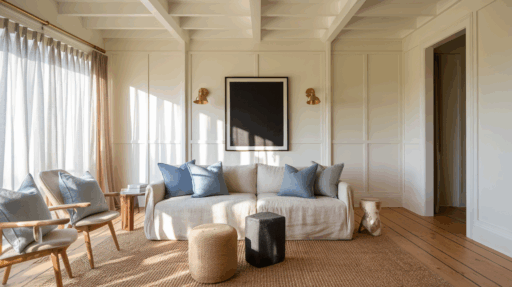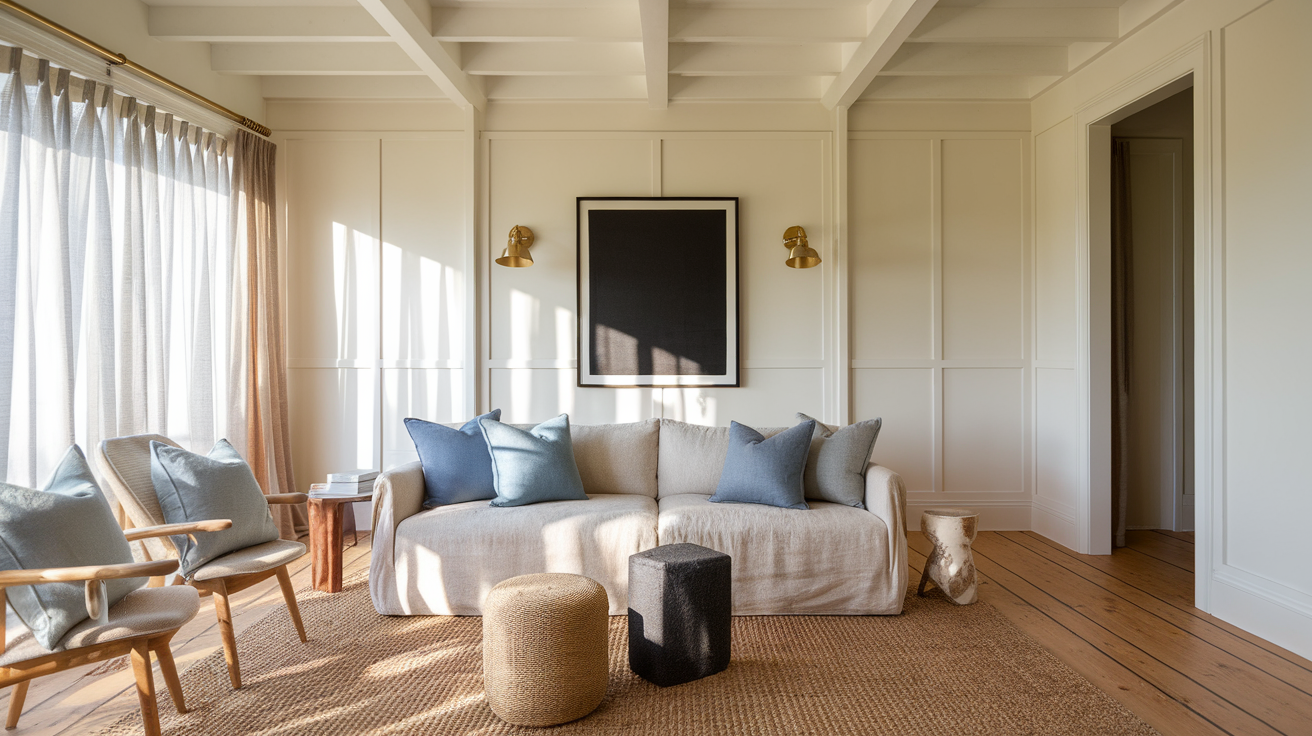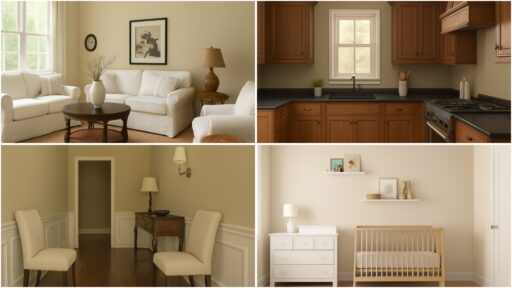When I first came across Shoji White by Sherwin-Williams, I thought it was just another off-white. But after using it in a few spaces, I realized it’s much more than that.
Shoji White has subtle undertones that make it warm, soft, and incredibly versatile. It’s not too yellow, not too gray – it sits right in the middle, giving rooms a cozy but clean look.
I love how it changes throughout the day depending on the lighting, making it perfect for both modern and traditional homes.
If you’re looking for a neutral paint color that feels a little creamy without being beige, Shoji White might be just what you need.
In this blog, I’ll break down its undertones, where it works best, and how it compares to similar colors so you can feel confident using it in your own home.
What Makes Shoji White Unique?
Shoji White by Sherwin-Williams stands out because of its warm, creamy undertone that still feels light and airy.
Unlike stark whites, it has a soft beige-gray base that adds depth without making a room feel yellow or dingy.
I’ve used it in rooms with both natural and artificial light, and it always brings a calm, welcoming vibe. It pairs well with wood tones, dark trims, and even black accents, making it super versatile.
Shoji White also adapts beautifully to various styles, including farmhouse, traditional, and modern. What really makes it unique is how it adds warmth without overpowering a space.
It’s gentle, flexible, and works in just about any room where you want a soft, clean backdrop with a little extra character.
How Lighting Affects Shoji White’s Undertones
Like most paint colors, Shoji White doesn’t always look the same. It shifts depending on how much natural light you get and what kind of bulbs you’re using indoors.
Natural Light Brings Out the Gray:
- In bright rooms, especially those facing south or west, Shoji White can look cleaner and closer to white.
- The light draws out the gray undertone and can make the walls feel airy and soft.
- This is where Shoji White almost becomes a “chameleon” color. It won’t turn cold, but it can feel much lighter.
Low Light Makes It Creamy:
- In rooms with less light, like north-facing bedrooms or shaded corners, Shoji White pulls more of its beige tone.
- It may look a bit deeper and warmer, almost creamy, but still never yellow.
- This makes it a strong pick for cozy spaces. It warms up naturally when you need it most.
Shoji White vs. Yellow and Cream Tones
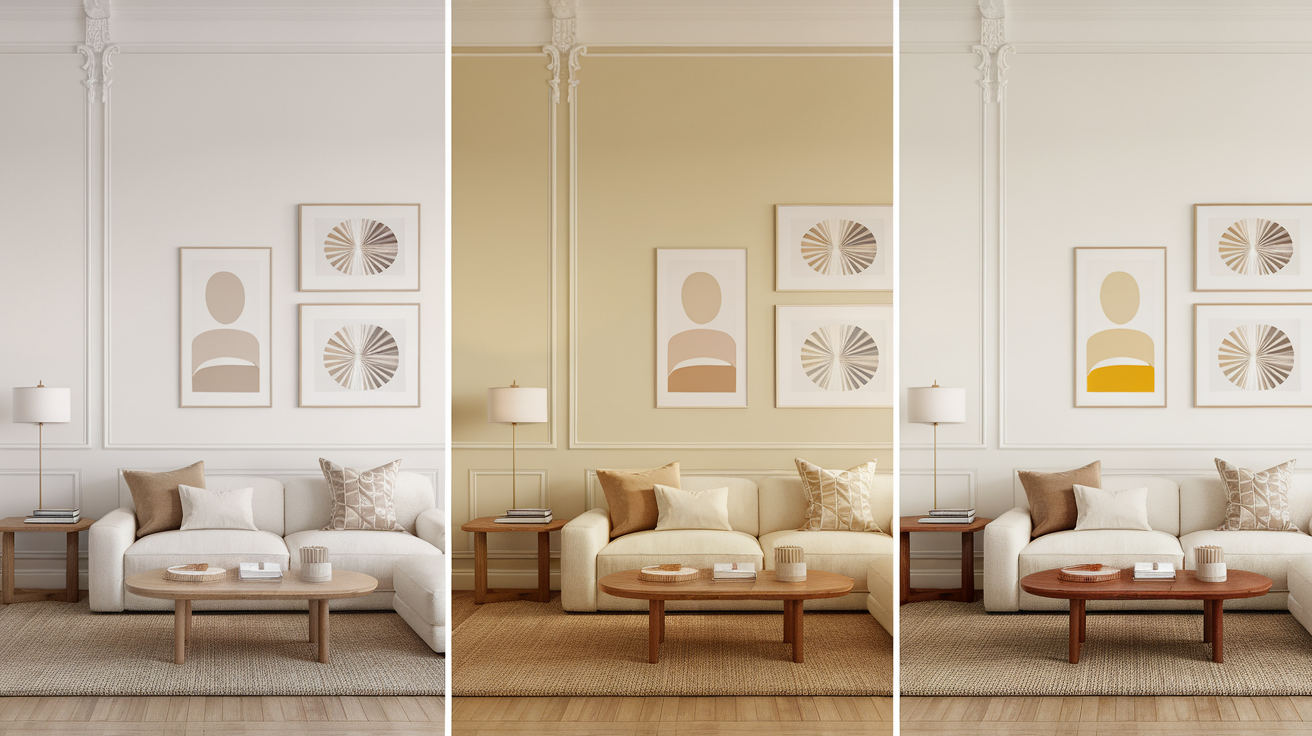
Many people worry that warm whites will end up looking yellow. Shoji White avoids that issue.
Is It Too Warm?
No, Shoji White is not too warm. While it has warm undertones, they are balanced enough that it never feels golden or buttery.
That’s why so many people love it in both modern and traditional spaces; it doesn’t lean too far in either direction. Even under warm lighting, it keeps its calm feel.
Why It’s Safer Than Creams
Cream-based whites like Dover White or Navajo White can sometimes feel heavy or dated.
Shoji White doesn’t go that far. It has more balance, which makes it a safer, more neutral option if you want warmth but not a yellow cast.
Shoji White and Trim: The Perfect Pairings
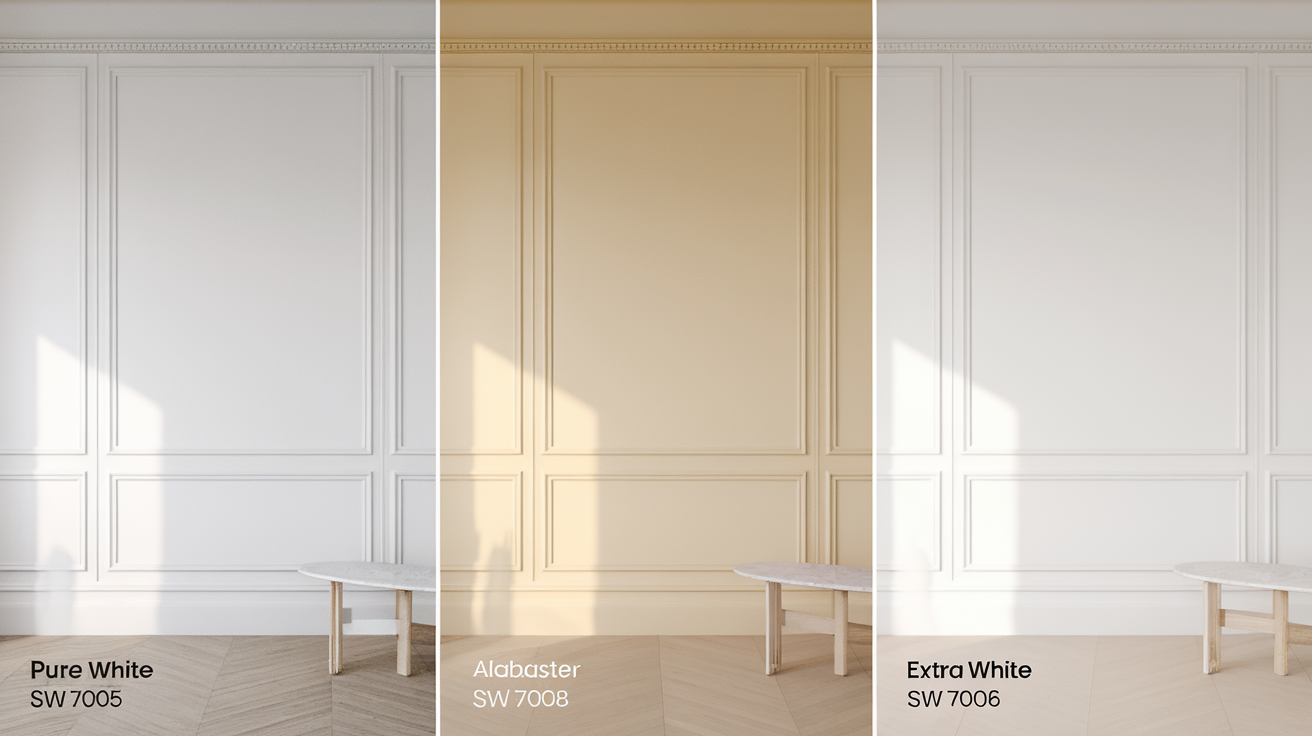
Your trim color can change how Shoji White looks. You’ll want to pick something that highlights its subtle warmth without clashing.
Here are a few trim options that work beautifully:
- Pure White (SW 7005) – A soft, neutral white that gives a clean contrast.
- Alabaster (SW 7008) – A warmer white if you want a soft, blended look.
- Extra White (SW 7006) – A brighter white for strong contrast.
If you want your walls to feel smooth and connected, go with Alabaster. If you want a clean, modern edge, Extra White is perfect.
Furniture and Decor That Compliment Shoji White
Shoji White’s undertones work well with a wide range of textures and materials. Its warm, greige tone is especially good with:
| Element | Examples |
|---|---|
| Natural Woods | Oak, walnut, cedar |
| Soft Fabrics | Linen, cotton, wool in oatmeal, blue, or blush |
| Matte Metals | Black, bronze, brushed gold |
| Earthy Accessories | Clay pots, woven baskets, jute rugs |
Whether your home is farmhouse, boho, coastal, or minimal, Shoji White creates a soft canvas for your style.
Shoji White in Real Rooms
Let’s take a closer look at how Shoji White works in different areas of your home.
1. In Bedrooms and Living Rooms
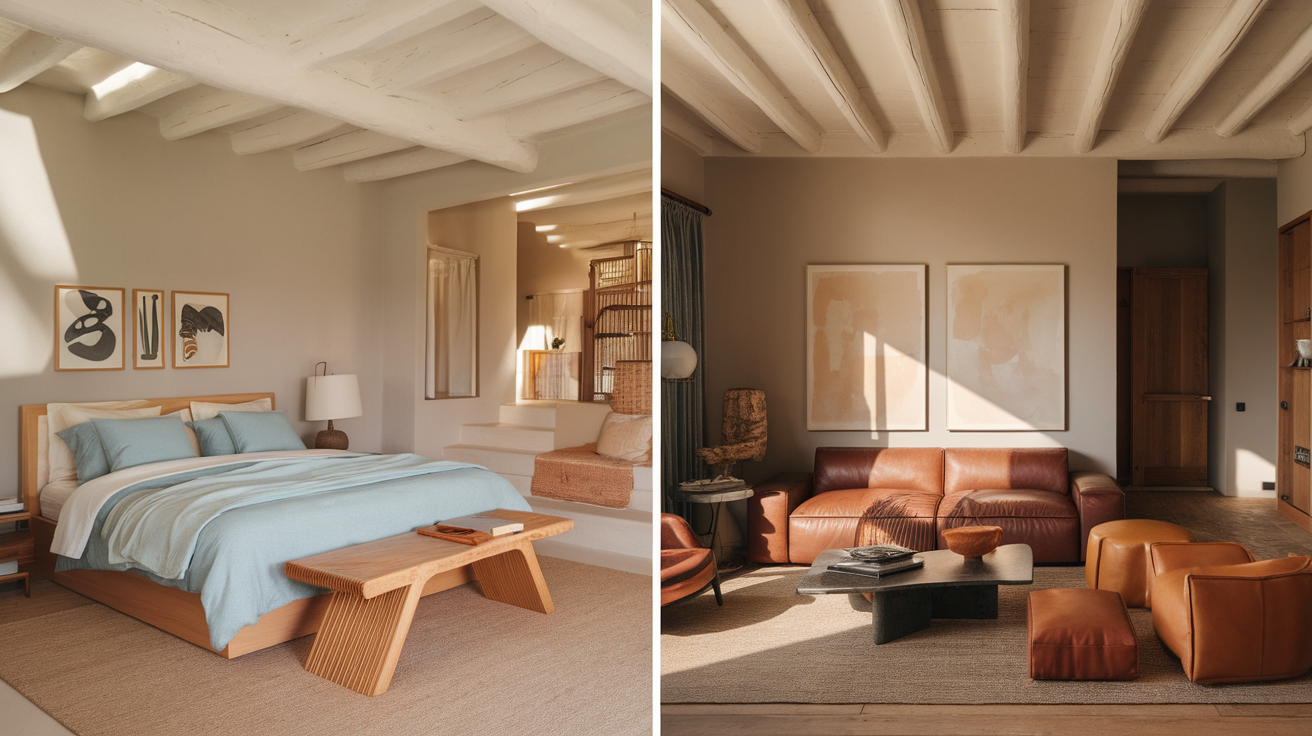
Shoji White creates a calming and relaxing atmosphere, making it ideal for spaces where you want to unwind and feel at ease.
In bedrooms, Shoji White pairs beautifully with soft blues, warm wood tones, and cozy textures like linen or knit bedding. It sets the stage for a peaceful retreat while still offering a bit of character.
In living rooms, this shade serves as a quiet backdrop that allows natural elements like leather furniture, stone accents, or statement art pieces to stand out. It never competes for attention.
Because it has subtle depth, Shoji White avoids the cold, sterile feel that some pure whites can create. Instead, it adds a soft glow that works in both bright and low-light spaces.
2. In Kitchens and Bathrooms
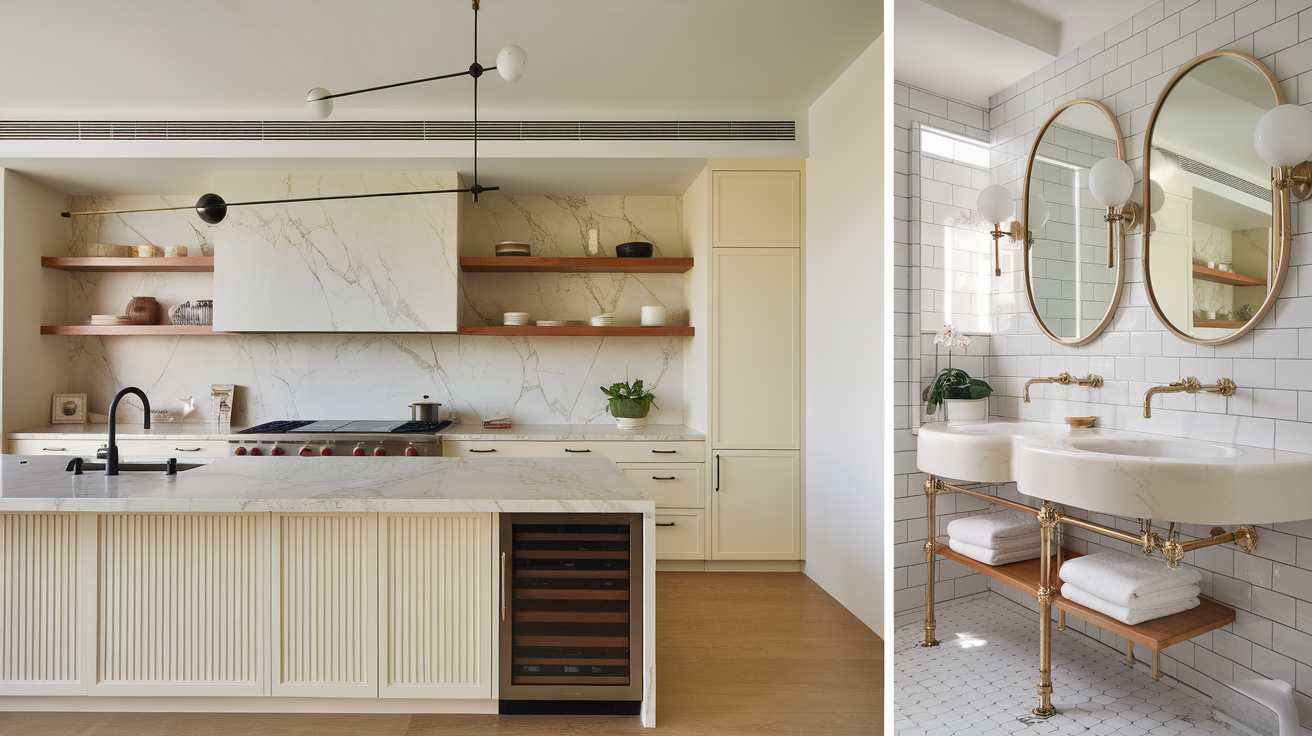
Shoji White is also a fantastic choice for kitchens and bathrooms where tile, stainless steel, or mixed-metal fixtures are common.
Its warm, creamy undertones help bridge the gap between soft, traditional elements and sleek, modern finishes. Instead of clashing or feeling too sharp, everything comes together with a balanced, cohesive look.
It blends beautifully with a variety of materials and finishes, including:
- Marble countertops – Whether cool-toned or warm-veined, Shoji White complements marble’s natural elegance.
- Matte black hardware – The contrast adds a crisp, stylish touch without looking too harsh.
- Brass faucets – The warmth in both the paint and the metal creates a rich, layered feel.
- Creamy cabinets – Shoji White pairs effortlessly with soft off-whites, giving depth without too much contrast.
It’s the kind of color that softens modern edges and makes cool materials feel less stark and more livable.
Comparing Shoji White to Similar Colors
Shoji White vs. White Duck
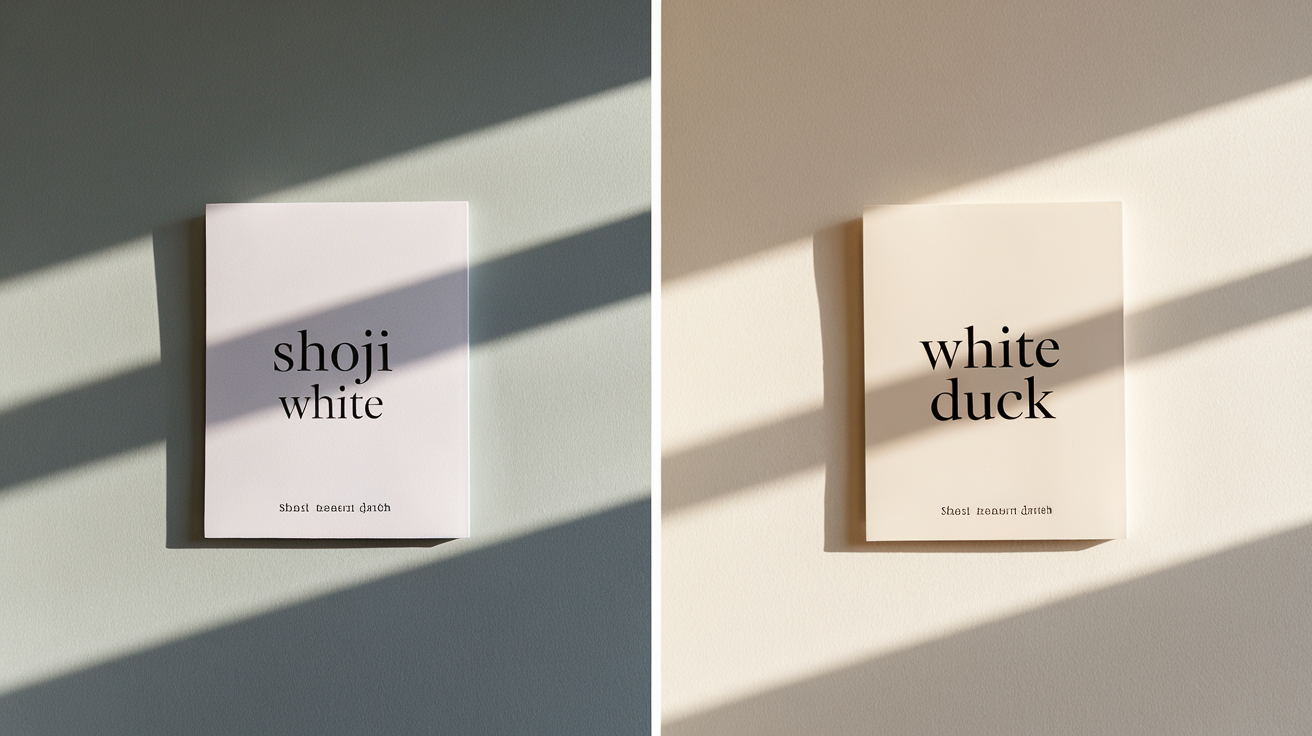
- White Duck is warmer and creamier, with stronger beige tones. It gives rooms a soft, cozy feel—great for traditional or rustic spaces.
- Shoji White is more balanced with a touch of gray, making it softer and less yellow. It feels clean and calm without being too warm.
Choose Shoji White if you want a gentle neutral that doesn’t lean too beige.
Shoji White vs. Oyster White and Natural Choice
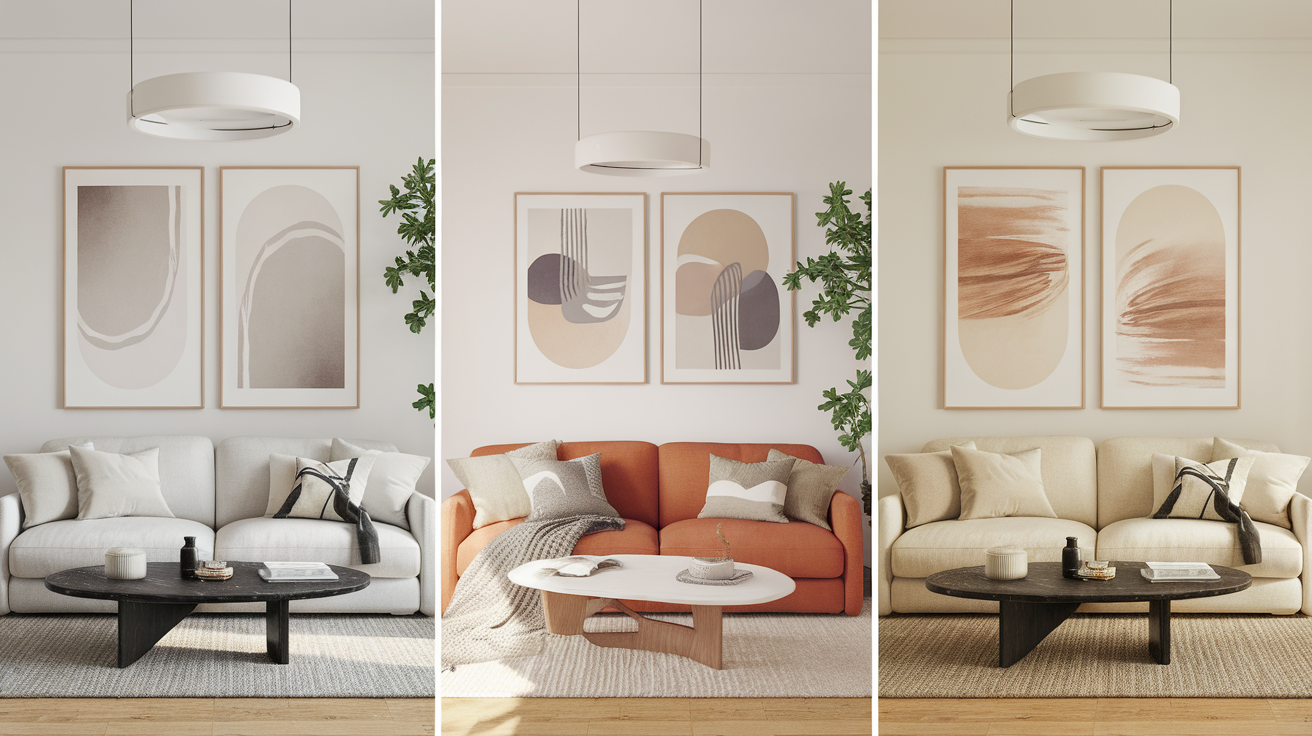
- Oyster White is cooler with a slight gray tint, giving it a more subdued, relaxed look.
- Natural Choice is lighter and more neutral, perfect for soft, clean spaces without strong undertones.
- Shoji White sits right in the middle – warmer than Oyster White, but with more depth than Natural Choice. It offers balance, making it a flexible pick for many styles.
Shoji White vs. Benjamin Moore Wind’s Breath
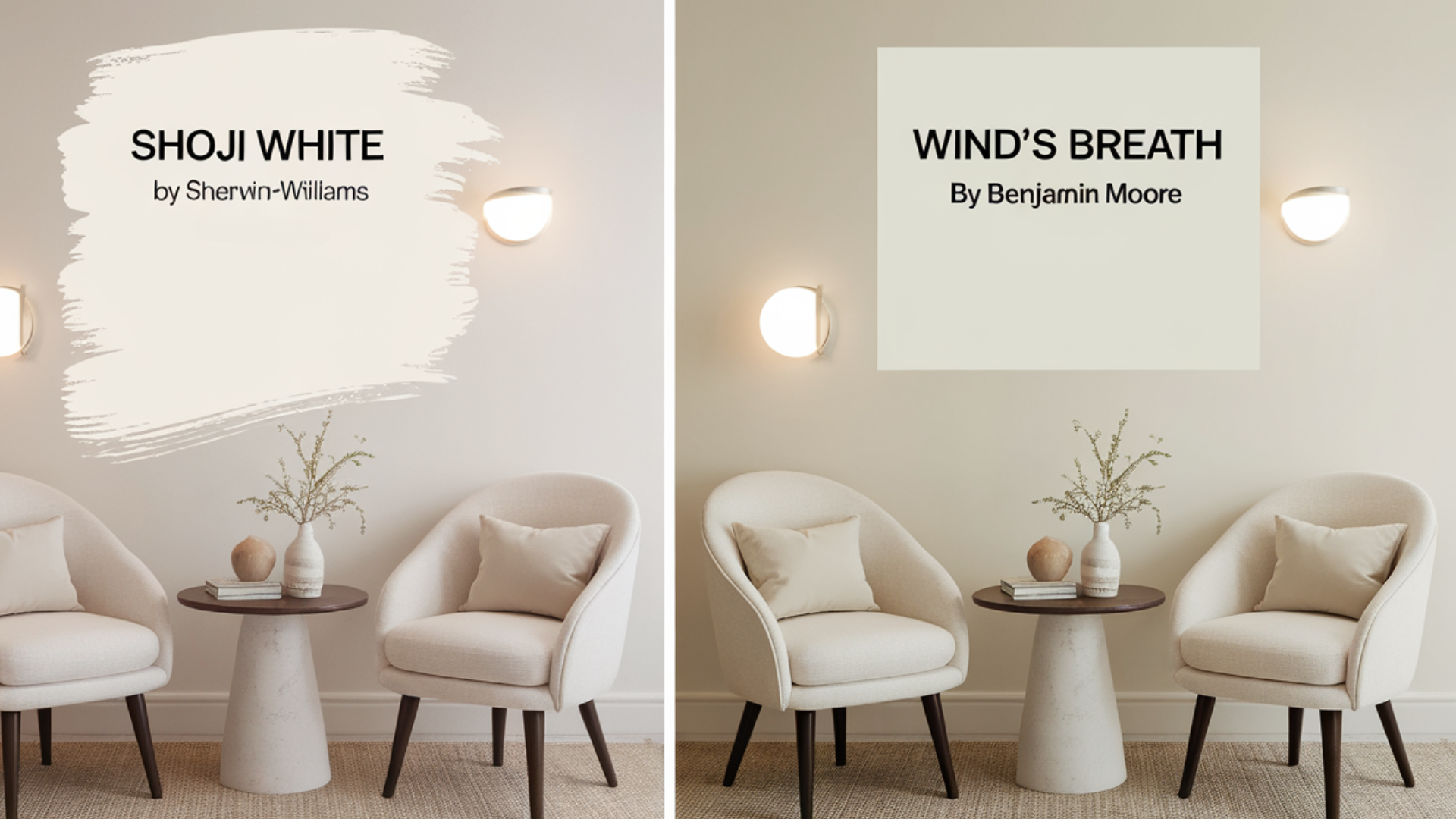
- Wind’s Breath is very close in tone, but it leans more neutral and flat, especially in steady lighting. It doesn’t shift much, which makes it a safe, consistent choice.
- Shoji White, on the other hand, has more noticeable warmth, especially under soft or warm lighting. It can feel cozier and a bit more dynamic.
If you prefer Benjamin Moore, Wind’s Breath is a great dupe. But if you want a touch more softness and warmth, Shoji White might be the better fit.
Final Thoughts
Shoji White by Sherwin-Williams is a versatile, soft neutral that works beautifully in a variety of spaces.
With its gentle warmth and hint of gray, it adds depth without overpowering a room. It pairs effortlessly with natural materials like wood, stone, and mixed metals, and works well with both modern and traditional styles
Compared to similar shades like White Duck, Oyster White, or even Benjamin Moore’s Wind’s Breath, Shoji White offers a unique balance – warm but not too creamy, soft but not flat.
I’ve seen how it transforms spaces, creating a calm and welcoming atmosphere no matter the lighting.
No matter if you’re painting a bedroom, kitchen, or whole house, Shoji White is a timeless choice that brings harmony and character.
Try a sample first, see it in different lights, and enjoy how beautifully it blends into your home’s story.

